MARKET OVERVIEW
The global cosmetic-grade glycolic acid market has been one of the very fast-growing sectors of the personal care and beauty industries in the recent past. Being an alpha-hydroxy acid, it is derived from sugar cane and is noted chiefly for the exfoliating prowess it possesses. It happens to be among the most widely used products in many cosmetics, extending to skincare formulations, chemical peels, and anti-aging treatments. This market is driven by growing consumer awareness and demand for effective skincare solutions, primarily oriented towards aging, acne, and hyper-pigmentation.
The primary drivers of the Global Cosmetic Grade Glycolic Acid market are the growing interest in skincare routines and products with visible results. With enhanced knowledge about active ingredients, there is a growing demand for products containing glycolic acid since it provides outstanding benefits to the skin, improving its texture, tone, and overall appearance. Further, the rising demand for natural and organic skincare products fuels the market growth due to the origin of glycolic acid from nature.
The market also drives technological innovation in product formulation and manufacturing processes. As such, companies are investing in research and development to create new products that deliver glycolic acid in a more stable and effective manner. This involves encapsulation technologies that allow controlled releases of glycolic acid, consequently leading to reduced irritation while maximizing its benefits. Another growing trend is the development of combination products containing glycolic acid with other beneficial ingredients, hence providing consumers with multifunctional skincare products.
Geographically, the global cosmetic use glycolic acid market represents huge potential in different regions. Traditionally, North America and Europe have been the leading markets in terms of consumer spend on premium skincare products and with an established beauty industry. However, Asia-Pacific is turning out to be one of the growth places, driven by increasing disposable incomes, urbanization, and an increasingly large middle-class population that evinces high interest in personal grooming and beauty products.
The market is also determined by regulatory factors. There is a tight regulation concerning the use of glycolic acid in cosmetics in many countries. This means companies developing products will have to negotiate these different regulatory environments in order to get their products to market. This can affect the time and cost of product development. This, however, also entails that the adherence to these regulations guarantees a very high standard of quality and safety for the products being offered—something very important in winning consumer confidence and loyalty.
The success of this market also lies in the marketing strategies and proper distribution policies. Via digital marketing, social media, and influencer collaborations, companies can reach a larger customer base and spread awareness about the product benefits of using glycolic acid-based solutions. Another growth driver is the increasing e-commerce industry, which has made it easier for consumers to have access to a wide range of products, hence contributing to further growth in the market.
The Global Cosmetic Grade Glycolic Acid market is going to continue this trend of growth, impelled by consumers in search of innovative skin care solutions, new technology, and a number of other strategic marketing activities. As the beauty industry keeps on evolving with time, so will the role of glycolic acid as a key ingredient in formulating products that answer the diverse and constantly changing needs of consumers the world over.
Global Cosmetic Grade Glycolic Acid market is estimated to reach $358.9 Million by 2031; growing at a CAGR of 6.8% from 2024 to 2031.
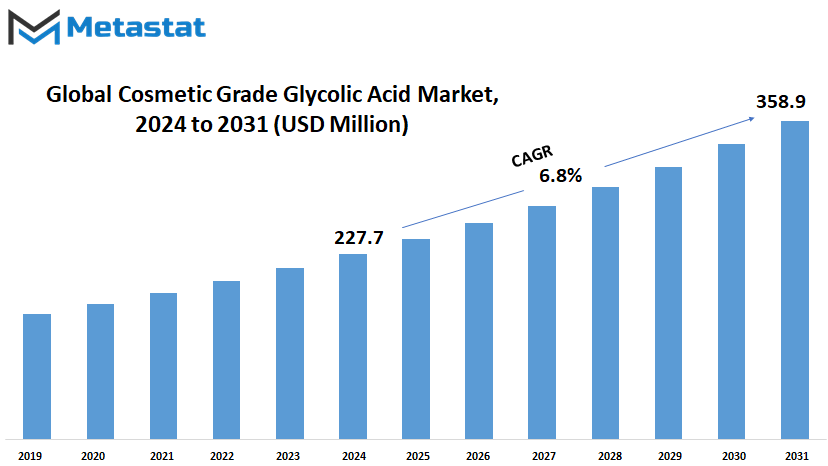
GROWTH FACTORS
Among the prominent factors driving growth in the global cosmetic grade glycolic acid market is the increasing consumer awareness and demand for anti-aging and skin renewal skincare products. With growing expectations from the beauty sector, cosmetic manufacturers are on a keen lookout to formulate innovative skincare solutions with ingredients such as glycolic acid that help meet such consumer demands.
However, there are barriers to the acceptance of glycolic acid in skincare formulations. The probable induction of skin irritation and sensitivity responses to its use thus limits its applicability in some products and for sensitive skin individuals. Moreover, regulatory requirements on the use of glycolic acid in cosmetics present formulation challenges and market access barriers to manufacturers.
With the progress in formulation technologies and delivery systems, the market is expected to grow. Improving the efficacy and safety profiles of cosmetic grade glycolic acid products to suit many consumer needs and preferences is an idea that such developments are focused on. Novel formulations are projected to open up new vistas in skincare, thereby improving the growth prospects of this market in the coming years.
Though the global cosmetic grade glycolic acid market is buoyed by increasing demand due to anti-aging skincare trends and new developments in the field of cosmetics, probable skin reactions and bureaucratic hurdles are awaiting it on the way. Advanced formulations and delivery methods in development promise to overcome these challenges and hence open the doors to broader market applications, further supporting the market's long-term growth trajectory.
MARKET SEGMENTATION
By Product Form
Product forms of Cosmetic Grade Glycolic Acid in the changing global market help to meet variant consumer needs. For example, market segmentation acts to classify Cosmetic Grade Glycolic Acid into product forms such as: Liquid, Gel, Cream, Lotion, Peel. The diversity of these forms indicates that very many benefits can be derived from them, a reason they are applied in certain ways within the cosmetic industry.
The liquid formulations of Cosmetic Grade Glycolic Acid are versatile and used in all major skincare formulations due to ease of application and absorption by the skin.
On the other hand, gel formulations offer a thicker consistency with respect to liquids. These are appreciated for their virtue of sticking to the surface of the skin, slowly releasing Glycolic Acid over a period of time. Gels are very much in demand for specific skin applications, especially where some prolonged action can enhance their efficacy.
creams—the second major form of products in this market segment—are thus combined with advantages connected to the moisturizing and exfoliating benefits of Glycolic Acid, becoming really useful in cases where customers want both hydration and skin renewal. Cream formulations are mostly light, very effective, yet well-tolerated across a wide range of skin types.
Lotion, being weaker in nature, will have lesser concentration of Glycolic Acid compared to the cream. They are preferred as they can be applied easily on the skin, and the ingredient gets absorbed in no time and rapid to make sure proper hydration with mild exfoliation. This makes lotions more common in daily skincare routines where one wants to find a balance between gentle exfoliating and comfortable skin.
Peels are stronger than the daily use products as they exfoliate and renew more. This range of peels, designed for occasional application, has high concentrations of Glycolic Acid for high improvements in clarity and texture of skin. Peels can address more intensive skin concerns, such as uneven tone and texture
By Application
The Cosmetic Grade Glycolic Acid market is booming across the world, driven by its wide range of applications in skincare. This compound thus becomes very important in modern skincare formulation, containing the key segments of exfoliation, anti-aging, skin brightening, and acne treatment.
Exfoliation is considered one of the prime uses for cosmetic grade glycolic acid. This acid works perfectly with dead skin, removing it to bring out smoother and brighter-looking skin from underneath. This serves in not only enhancing the texture of the skin but also prepares the skin for the absorption of other skincare products. With beautymaking trends shifting towards having natural radiance and a healthy glow, so does the role of glycolic acid in exfoliating.
In anti-aging treatments, glycolic acid creates quite a difference by rapidly fading away fine lines and wrinkles through stimulating collagen production and increasing the pace of cell turnover. This is an application that appeals to the rising consumer base in search of effective but non-invasive solutions for maintaining youthful skin.
Another key segment is skin brightening, where glycolic acid lightens hyperpigmentation or dark spots, hence making a person's complexion look more even-toned. This aspect has been specifically highly valued across various markets in the world where skincare requirements vary tremendously based on climatic conditions, genetics, and other lifestyle factors.
The final application of cosmetic grade glycolic acid is for acne treatment. Enhancing this acid with the ability to unclog the pores, reduce inflammation, and further avert breakouts places it as a staple in acne management routines worldwide.
Moving forward, in the coming years, breakthroughs in skincare technologies will occur as a result of consumer demand for multifunctional products. The manufacturers will strive toward enhancing product efficiency and customer experience; the manufacturers will also ensure their product compatibility with different skin types and conditions. Greater awareness about the merits of chemical exfoliation and targeted skincare solution will also fuel the growth of the ELISA processors market.
By End User
In the case of the Global Cosmetic Grade Glycolic Acid market, by End User, it turns out to be segregated into multiple categories that turn into key drivers. Basically, it bifurcates into Skincare Products and Professional Treatments.
These skincare products include serums, toners, and moisturizers all by themselves. These products use glycolic acid for exfoliating purposes—dead skin cells are washed away from the skin surface and leave users with smooth, dewy skin. Serums are formula-concentrated products; thus, they take advantage of using glycolic acid to boost their penetration deeper into the skin layers to treat certain conditions like uneven texture and fine lines. Toners, on the other hand, tighten pores with glycolic acid and prepare the skin for further treatments, while moisturizers infuse it to drive in hydration and rejuvenation.
Professional Treatments: Glycolic acid plays a crucial role in procedures like chemical peels and facial treatments that are used in dermatological practices. Various strengths of the glycolic acid in chemical peels exfoliate skin to a greater depth, hence prominently treating hyperpigmentation and acne scars. Facial treatments utilize glycolic acid for deep exfoliation and stimulation of collagen to accomplish skin of refined texture with improved elasticity.
Looking ahead, these segments within the Cosmetic Grade Glycolic Acid market are going to post remarkable growth. The increasing consumer demand for skincare solutions that give visible and long-lasting results will keep fueling innovations in product formulation and new treatment protocols. Research and technology advances will further refine the efficacy and safety of glycolic acid applications, thereby greatly enhancing their appeal across various demographics.
REGIONAL ANALYSIS
The cosmetic grade glycolic acid global market serves North America, Europe, the Asia-Pacific, South America, and the Middle East & Africa. Each region has unique opportunities and challenges in the growth of the market.
North America, comprising the U.S., Canada, and Mexico, probably will continue driving growth in the Cosmetic Grade Glycolic Acid market. This region hosts a mature cosmetic industry that is underpinned by considerable consumer awareness and disposable income. Furthermore, this market will also be boosted by the existence of key players and the launching of new products.
Demand for cosmetic products containing glycolic acid will also continue to rise in the European region, including the UK, Germany, France, Italy, and the Rest of Europe. The region has an extremely stringent regulatory framework in terms of quality and safety, which is very important to gain consumer acceptance and thus consequent market penetration.
Asia-Pacific, including India, China, Japan, South Korea, and the Rest of Asia-Pacific, is the growing market for cosmetic ingredients. With growing urbanization, increasing disposable incomes, and changing beauty trends, the glycolic acid applications in the skincare formulation are growing. Surgeon demand for domestic manufacturers is increasing the diversification of products to make them affordable and cater to the heterogeneity in consumer requirements.
Even South America, with major markets like Brazil and Argentina, is also showing some promising growth prospects in the Cosmetic Grade Glycolic Acid market. Economic development and increasing personal grooming trends among the population are boosting the demand of the market. Strategic expansions by the global cosmetic brands into these markets are expected to further fuel growth of the market.
This is expected to further boost the demand for the content of glycolic acid. The rising consumer spending on personal care products in the Middle East & Africa region regarding skincare routines and Western beauty standards predominately fuels the demand for the content with glycolic acid. Therefore, to gain a competitive advantage in the market, the major players are focusing on launching new products through strategic collaborations and in compliance with regional tastes.
The overall Cosmetic Grade Glycolic Acid market across all these regions is likely to experience fast growth over the forecast period. Key industries laying ground to potential growth areas in other psychology regions will be studied along with the technological advancements happening. With the market dynamics constantly changing, key stakeholders are expected to adapt quickly to exploit new opportunities to shield themselves from the ever-evolving competitive landscape.
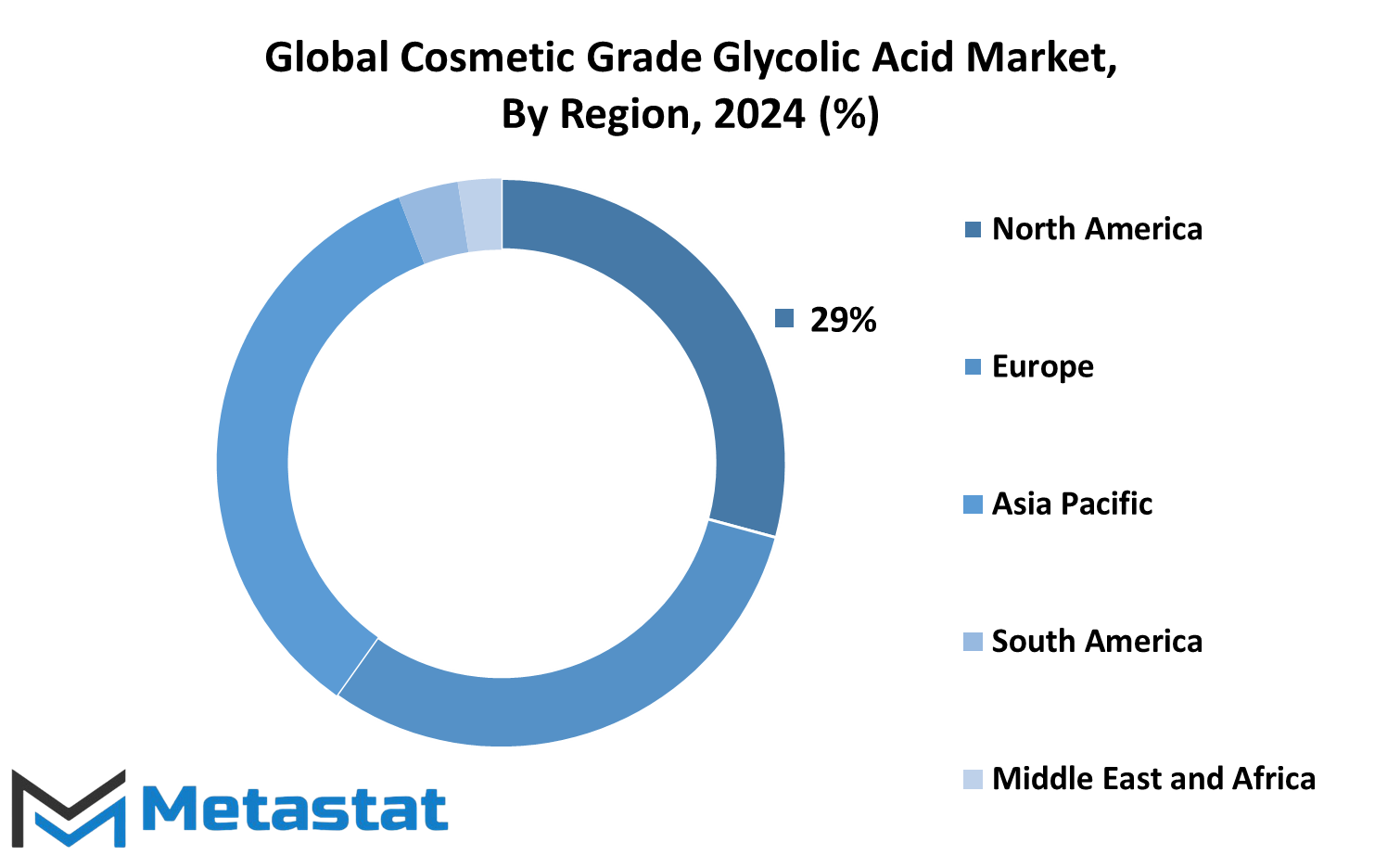
COMPETITIVE PLAYERS
Within the global market for Cosmetic Grade Glycolic Acid, a number of fiercely competing players are spread over. These companies contribute in changing the dynamics of this industry segment. Some of the well-known names include CABB Chemicals, Chemours, CrossChem, and Hefei TNJ Chemical, each of which makes valuable contributions to the market.
CABB Chemicals, known for its chemical expertise, innovates in the sector of Cosmetic Grade Glycolic Acid through its voluminous research capabilities. Similarly, Chemours, with its strong technological development, focuses on enhancing product quality and operational efficiency. CrossChem targets strategic collaborations and market expansion to boost its global presence.
Known for excellent quality and good customer service, Hefei TNJ Chemical Industry Co., Ltd. enables customers to enjoy the best Cosmetic Grade Glycolic Acid amidst an increasing demand. Its focus on green and sustainable development strategies also keeps it at par with changing regulatory requirements and consumer preference toward sustainability for its long-term market viability.
PhibroChem and UPI Chem also contribute to this joint venture in the delivery of specialized chemical formulations and broad industry knowledge. Their proactive research and development team, from a perspective to ensure product differentiation and innovation, means that through effectively addressing particular market needs, product differentiation can be done.
Of the companies, Zhonglan Industry, Avid Organics, and BMG Incorporated are striking for their diversified range of product offerings and strategic investments in technological and physical infrastructure. The latter allows these companies to respond quickly to changing markets and seize new opportunities related to the Cosmetic Grade Glycolic Acid business in general.
Additionally, the competitive landscape is further enriched by companies such as China Petrochemical Corporation, UL LLC, Hebei Chengxin Co. Ltd., and Jiaxing Jlight Chemicals Co. Ltd., which bring special capabilities and regional market knowledge to the table. From them, different applications have been brought into this segment to ensure versatility and resilience amidst competition in the global market.
Further, Kureha Corporation, Mehul Dye Chem Industries, Parchem Fine and Specialty Chemicals, Shandong Pharmaceuticals Co. Ltd., Water Chemical Co. Ltd., and Xinji City Taida Sinopec Co. Ltd. make giant contributions to the push of technological boundaries and manufacturing competencies. These companies, in a combined effort, have been innovating for a sustainable future and will set the course that the Cosmetic Grade Glycolic Acid market shall take in the future.
These competitive players reflect the collective commitment of innovative, quality, and sustainability traits in the global Cosmetic Grade Glycolic Acid market. The contribution from these companies shall continue to shape market dynamics and fuel growth in this vibrant industry segment.
Cosmetic Grade Glycolic Acid Market Key Segments:
By Product Form
- Liquid
- Gel
- Cream
- Lotion
- Peel
By Application
- Exfoliation
- Anti-aging
- Skin Brightening
- Acne Treatment
By End User
- Skincare Products (e.g., Serums, Toners, Moisturizers)
- Professional Treatments (e.g., Chemical Peels, Facial Treatments)
Key Global Cosmetic Grade Glycolic Acid Industry Players
- CABB Chemicals
- Chemours
- CrossChem
- Hefei TNJ Chemical
- PhibroChem
- UPI Chem
- Zhonglan Industry
- Avid Organics
- BMG Incorporated
- China Petrochemical Corporation
- UL LLC
- Hebei Chengxin Co. Ltd.
- Jiaxing Jlight Chemicals Co. Ltd.
- Kureha Corporation
- Mehul Dye Chem Industries
WHAT REPORT PROVIDES
- Full in-depth analysis of the parent Industry
- Important changes in market and its dynamics
- Segmentation details of the market
- Former, on-going, and projected market analysis in terms of volume and value
- Assessment of niche industry developments
- Market share analysis
- Key strategies of major players
- Emerging segments and regional growth potential



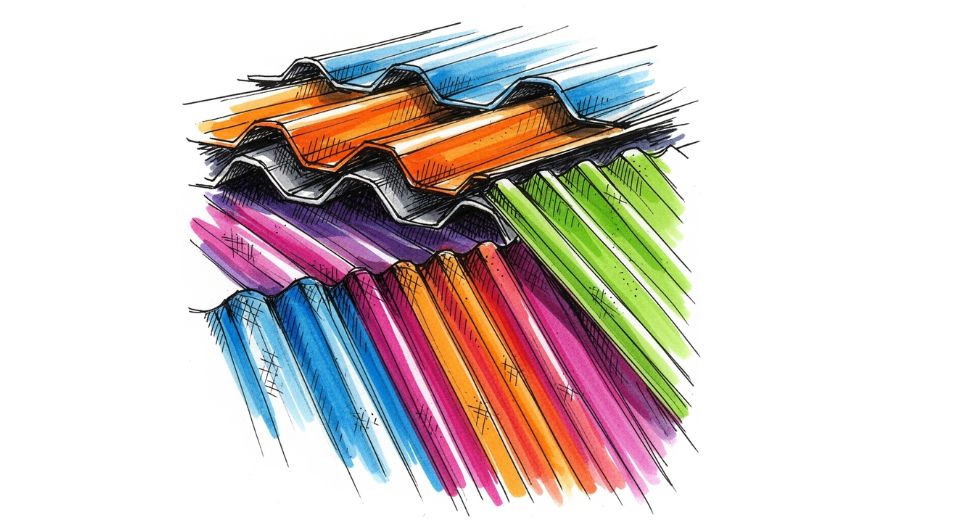
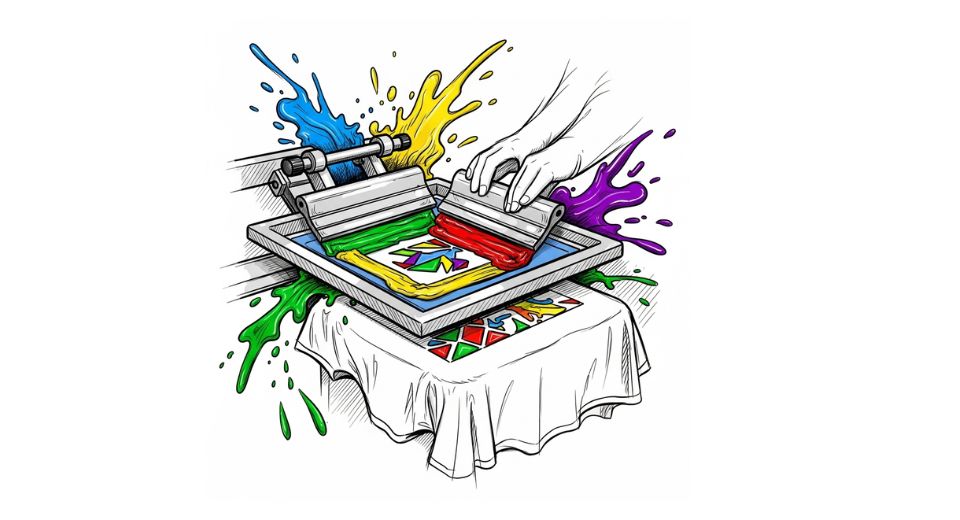
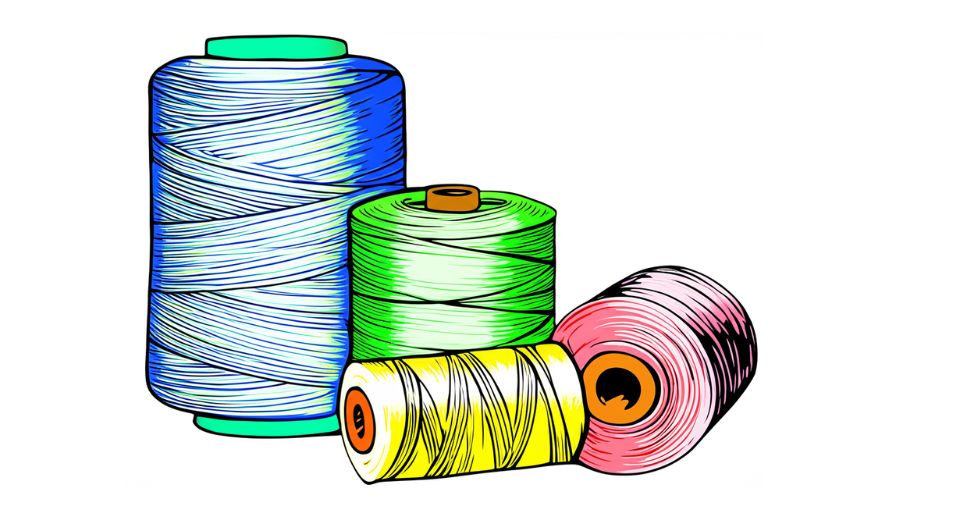
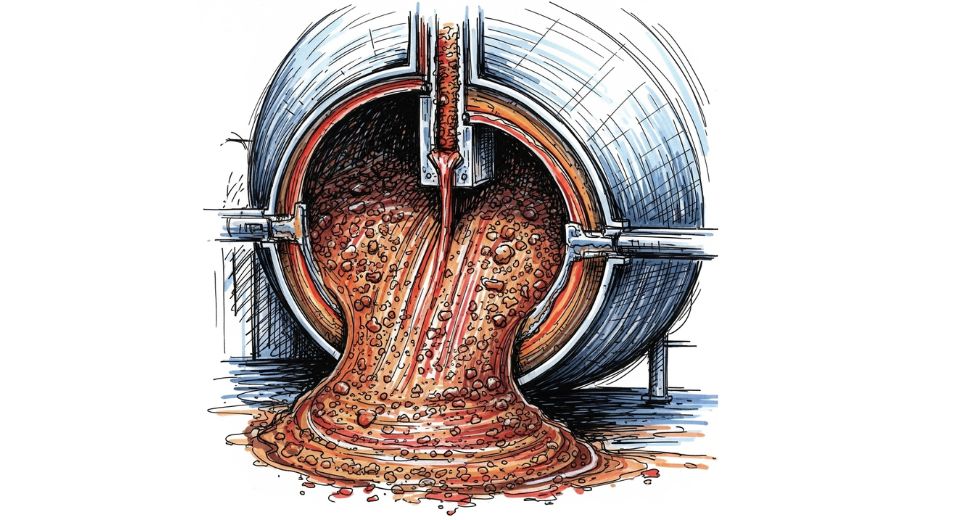

 US: +1 3023308252
US: +1 3023308252






